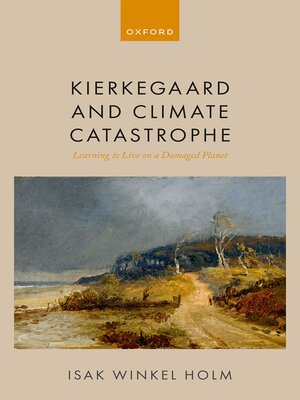Kierkegaard and Climate Catastrophe
ebook ∣ Learning to Live on a Damaged Planet
By Isak Winkel Holm

Sign up to save your library
With an OverDrive account, you can save your favorite libraries for at-a-glance information about availability. Find out more about OverDrive accounts.
Find this title in Libby, the library reading app by OverDrive.



Search for a digital library with this title
Title found at these libraries:
| Loading... |
S?ren Kierkegaard's work is teeming with images of earthquakes, floods, storms, volcanic eruptions, wildfires, burned down cities, and apocalyptic events that 'let the heavens fall and the stars change their places in the overturning of everything'. These disaster images are not just rhetorical packaging of the philosophical and theological content of his works. Rather, disasters play an important but largely understudied role in Kierkegaard's analysis of human existence. Kierkegaard and Climate Catastrophe focuses on prophetic noir in Kierkegaard's work: the sombre mood that is evoked when the shadow of future disaster falls upon the present. Isak Winkel Holm's core contention is that the prophetic noir in Kierkegaard, modelled after the prophetic books of the Hebrew Bible, contributes to making his works urgently relevant today. From the vantage point of the contemporary world threatened by rapidly evolving climate catastrophes, Kierkegaard's analysis of human existence emerges in a more sombre light, dimmed by the future disaster: to exist, in the emphatic sense Kierkegaard gave to that word, is to live a meaningful human life even if things are darkened by the coming calamity. Thus, a thorough analysis of the prophetic noir in Kierkegaard offers an existential perspective on living in a world threatened by environmental devastation.






